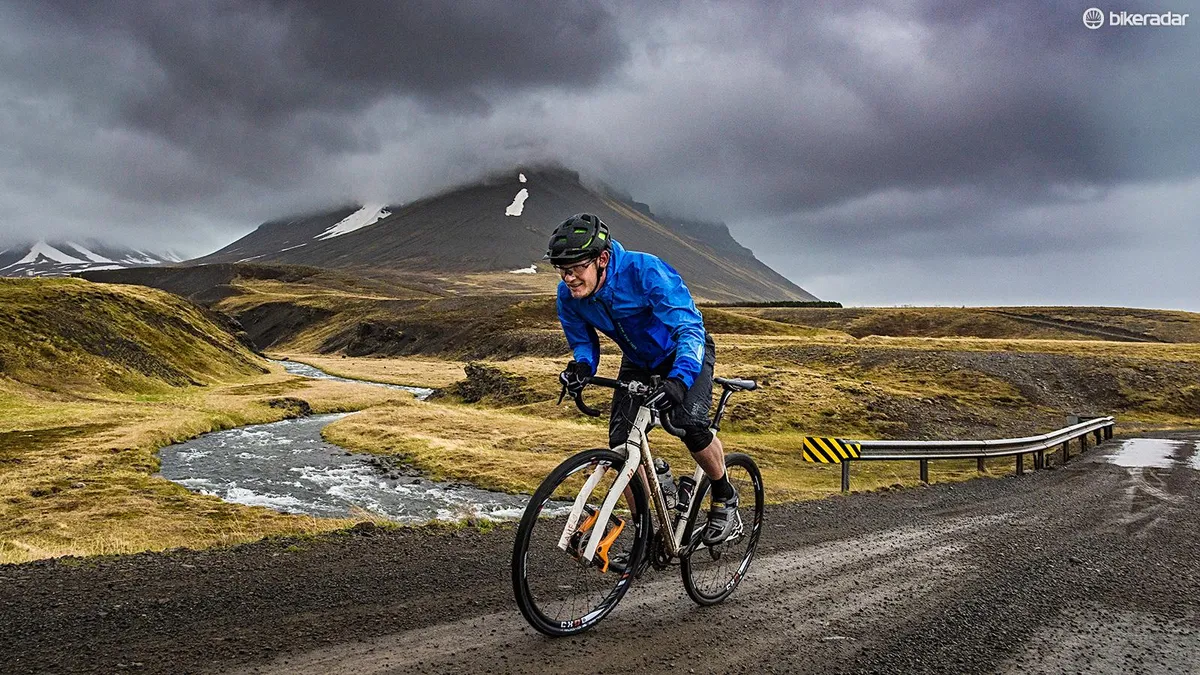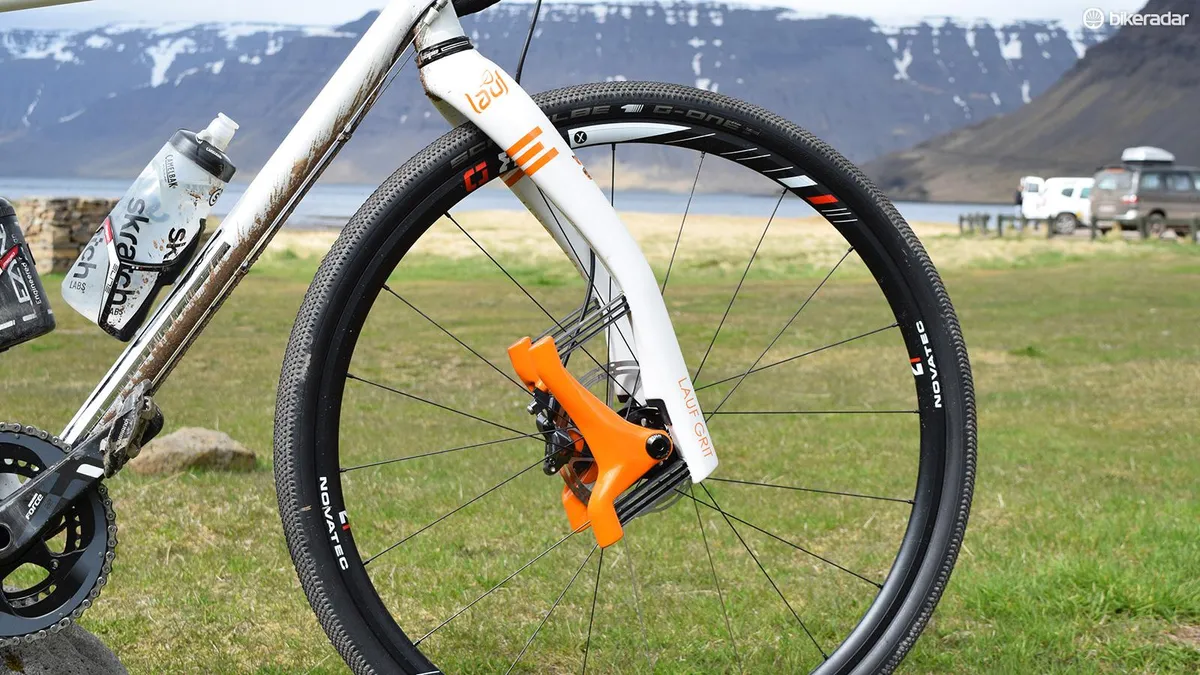Those with a keen eye for bicycle developments will have taken note of the rise in gravel bikes — road bikes with wider tyres, relaxed geometry and a go-anywhere attitude.
- Lauf Grit aims to take the edge off gravel riding
- Best gravel and adventure bikes
- Get started with gravel grinding
When it comes to crossing loose, rough roads, their slacked-out angles give stability and confidence while wider treads aid grip and comfort. However, when things get really bumpy or roughness is maintained for a prolonged period, fatigue and discomfort aren’t far away.
Mountain bikes have been equipped with suspension for a couple of decades now to help control impacts, boost comfort and improve grip on harsh terrain, and with gravel bikes now up to the task of tackling less than smooth roads it’s no surprise that suspension is (slowly) starting to appear.
There are currently three gravel suspension forks on the market: the Lefty Oliver (found on the innovative Cannondale Slate), which provides 30mm of hydraulically damped suspension, the Fox AX fork with 40mm of travel, and the Lauf Grit. Both Trek and Specialized have systems out there to reduce rough road buzz - the IsoSpeed decoupler as found on the Domane and the Future Shock on the Diverge and Roubaix - some might argue that these aren't 'true' gravel bikes however.
Lauf Grit design
The Grit has a carbon main body with two carbon lowers, which are attached to the main body by 12 glass-fibre leaf springs. The wheel sits on a bolt-thru-axle between the lowers that moves in relation to the upper and provides the suspension.
Lauf has previously launched a couple of mountain bike and fat bike forks, and the concept for the Grit is the same. The 30mm of travel the Grit has is 1.8 times stiffer than that found on the Trail Racer, Lauf’s engineers tell us. On the bike this means that, while there’s a little bit of bob when pedalling hard out of the saddle, for the most part the fork feels very neutral.
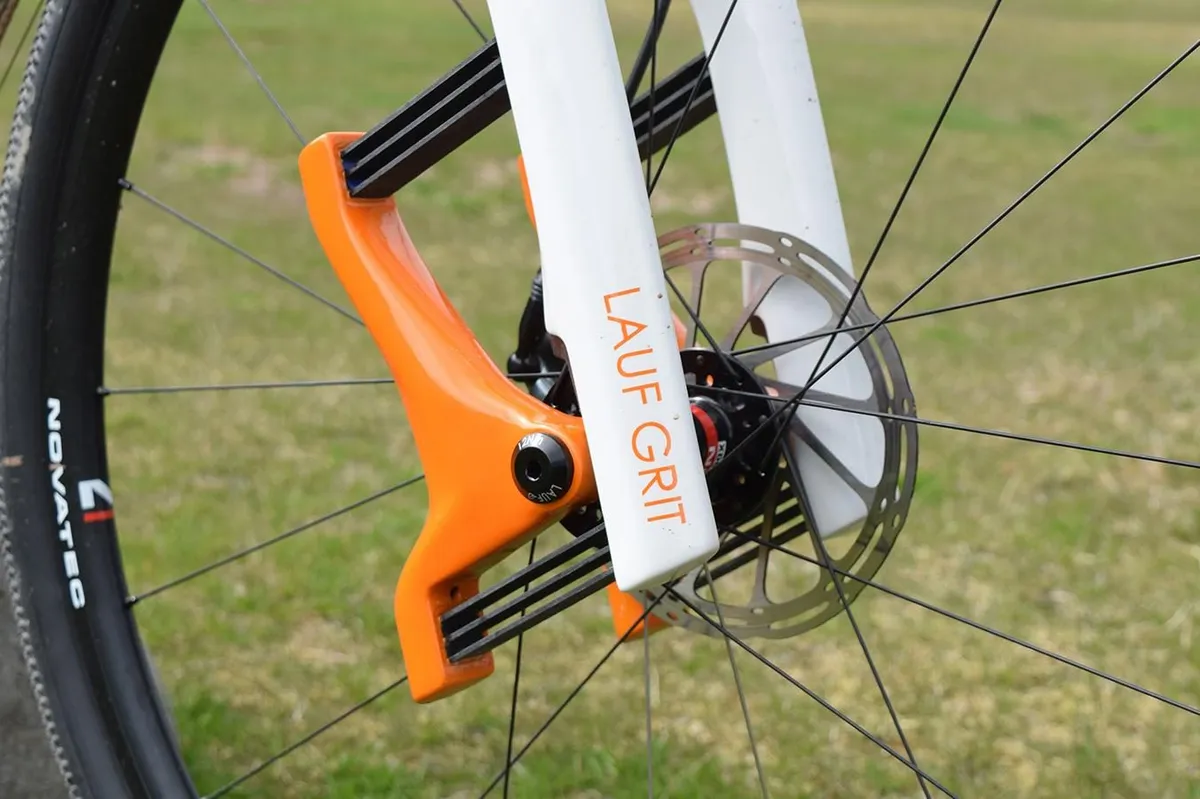
On smoother terrain you may well forget it’s there — the fork sits nicely into around 6mm of sag and the (sagged) AC length of 409mm shouldn’t mess up your geometry. When the road gets more choppy you start to feel the effects, with road buzz being killed by the leaf springs and square-edged hits much more noticeable when your rigid rear wheel hits them.
Not only does the wheel roll over obstacles more easily, the rebound on the suspension means the wheel maintains contact with the ground much more, which means the front wheel is less prone to pinging around.
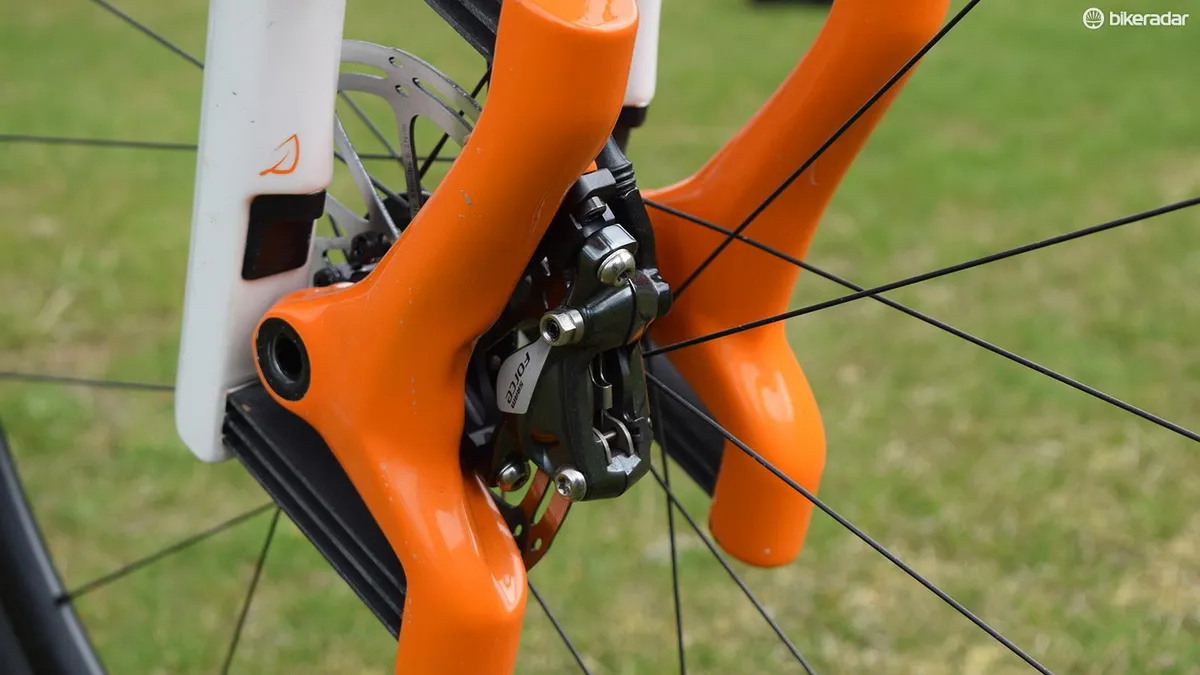
Where traditional suspension forks have stanchions moving past seals into a lower, the leaf spring design of the Grit means there are no moving parts creating friction between each other. Usually it’s this friction that kills high-frequency buzz and so the ride from the Grit is incredibly smooth. I'm hoping to compare it back-to-back with the recently released Fox AX fork, which we had a First Ride on recently.
Watching the fork track over fine grit and gravel reveals just how much work the fork is doing — it feels like you’ve triple-wrapped your bars. The effect of this on longer rides is that hand fatigue is greatly reduced.
Lauf Grit performance
While most suspension forks allow adjustments to compression and rebound, and often lock-outs, the Grit has none
While the Grit doesn’t entirely isolate you from bigger impacts, such as dropping off a kerb or hitting a pothole, it does lessen the shock, so you’re more likely to retain control — and less likely to puncture (up front anyway). What it gives you is an extra safety blanket when riding blind or in poor conditions.
I was happy riding down rough, rocky, potholed Icelandic gravel roads in excess of 70kph in the wet, and with my glasses covered in streaming gritty water, which is testament to the confidence that the extra bit of control gives you.
My main criticism of the original mountain bike version of the fork was that poor torsional stiffness meant handling in high-load corners and through rock gardens was somewhat sketchy. While the Grit isn’t the stiffest torsionally, I didn’t feel that this held the fork back for the most part — you're putting far less twist and side-loading forces through a gravel fork than you are on a mountain bike.
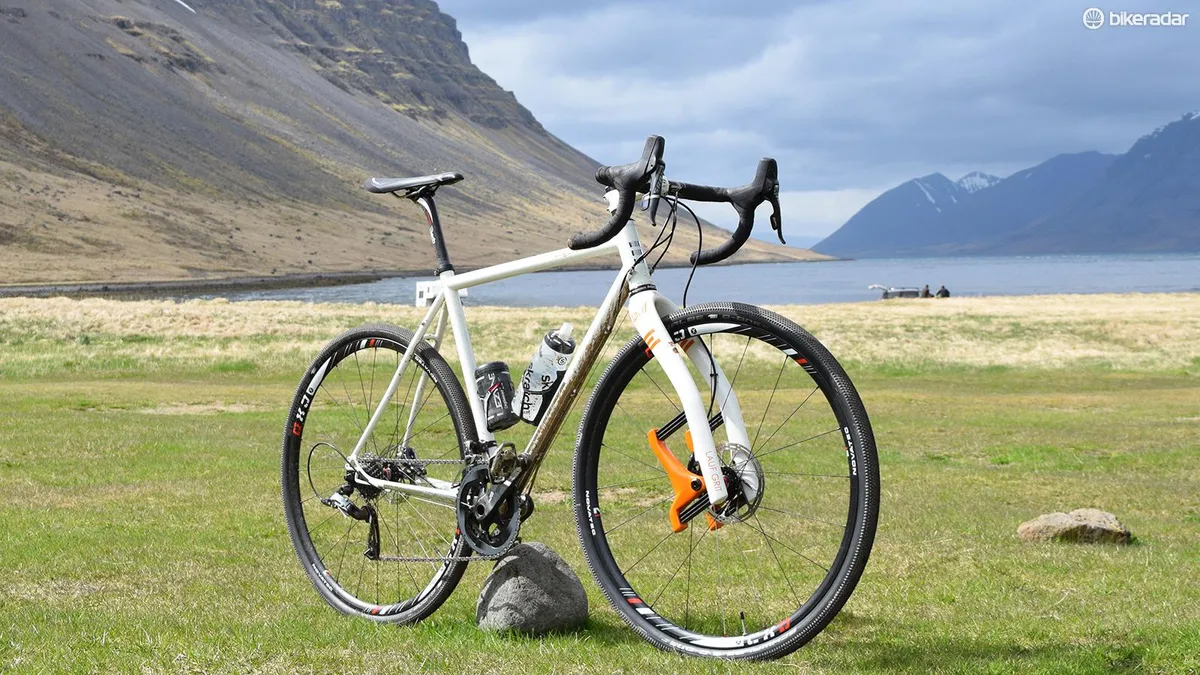
I rode around 400km on the Grit during testing and only twice felt the fork was being overworked.
First was on a steep, rough corner where I was braking heavily to avoid an errant dog, and the highly loaded front-end didn’t feel overly composed.
Second was a touch of speed wobble, experienced well past spinning-out speed, when I suddenly hit a blast of side wind as I rounded a corner. The front wheel wobbled and I found bringing it back under control was a touch trickier than I was used to.
Lauf Grit compatibility
In order to test the Grit properly, I received an Engineered Bikes Gezel with the fork custom painted. The slim stays of the steel bike provided compliance over rough stuff, and helped me maintain the speeds the Grit allowed.
On gritty, washboard terrain the reduction of road buzz is very impressive, with vastly increased comfort, control and safety
While the Grit can be used on a CX bike, a more gravel orientated bike, such as the Gezel, felt like its natural match, with slightly relaxed, easy to ride geometry, along with that steel comfort.
While most suspension forks allow adjustments to compression and rebound, and often lock-outs, the Grit has none. Lauf argues that the short travel and stiff-ish spring means that there’s little need for adjustment.
Rebound control is perhaps one of the most important adjustments on a mountain bike fork, to prevent that uncontrolled pinging feeling, however the rate of rebound from the springs on the Grit felt fairly well controlled (there is an element of inherent damping there apparently), and the 30mm of travel is much smaller than a traditional mountain bike fork anyway.
I agree with Lauf that, while riding, I didn’t really feel I wanted to change their feel — they’re not as pogo-stick-ey as you might imagine.
The Grit should be compatible with most gravel bikes on the market, with a tapered 1 1/4–1 1/8” steerer, and included 1 1/2” adaptor, 160mm (min) flat mount brake spacing, 12x100 and 15x100mm axle options and 700x42c (or 27.5” x 2.1”) maximum tyre size.
With 6mm of sag, the axle to crown length is 409mm with a rake of 47mm. My test sample came in at 961g with an un-cut steerer including axle.
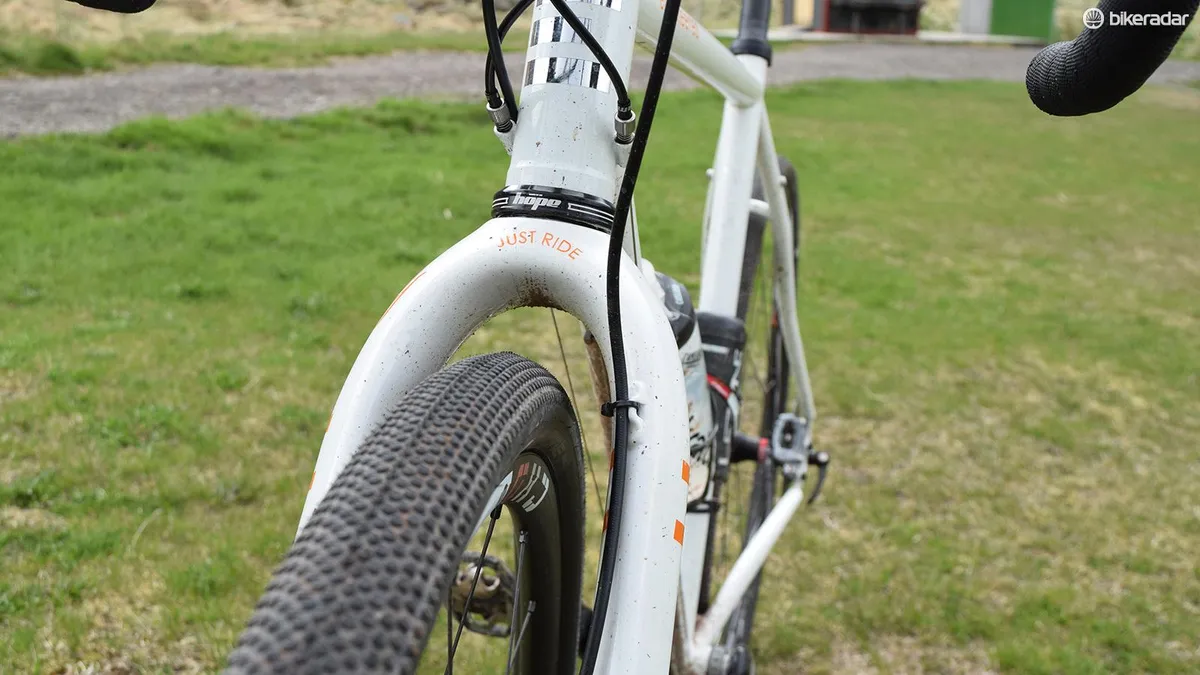
Lauf Grit out on the trails
There are sure to be many out there who think there’s no need for such a product, and probably a fair few who might find the aesthetic ‘challenging’, but for those who can see past it the Grit actually impressed me as a somewhat skeptical tester.
On gritty, washboard terrain the reduction of road buzz is very impressive, with vastly increased comfort, control and safety. When riding rough terrain at speed it’s possible to squeeze out yet more kph from your bike, safe in the knowledge that the front end is better glued to the road and the impact of potholes and rocks is much lessened by the fork.
There is a hint of bob from the fork and very occasionally you can push past its performance envelope, but I’d bet that you’d also be well past that of a traditional fork or wheel/tyre combo by that point anyway.
The Lauf Grit costs £799.99 / $790 and is available direct from Lauf Forks or via their international distributors (Upgrade Bikes in the UK).
I'm heading out to Iceland shortly as we believe Lauf has yet another product up its sleeve, so look out for news soon.
